Abstract
Benzene exposure of chemical workers was studied, during the entire workshift, by continuous monitoring of workplace benzene concentration, and 16 hours after the end of the workshift by the measurement of alveolar and blood benzene concentrations and excretion of urinary phenol. Exposure of hospital staff was studied by measuring benzene concentrations in the alveolar and blood samples collected during the hospital workshift. Instantaneous environmental air samples were also collected, at the moment of the biological sampling, for all the subjects tested. A group of 34 chemical workers showed an eight hour exposure to benzene, as a geometric mean, of 1.12 micrograms/l which corresponded, 16 hours after the end of the workshift, to a geometric mean benzene concentration of 70 ng/l in the alveolar air and 597 ng/l in the blood. Another group of 27 chemical workers (group A) turned out to be exposed to an indeterminable eight hour exposure to benzene that corresponded, the morning after, to a geometric mean benzene concentration of 28 ng/l in the alveolar air and 256 ng/l in the blood. The group of hospital staff (group B) had a benzene concentration of 14 ng/l in the alveolar air and 269 ng/l in the blood. Instantaneous environmental samples showed that in the infirmaries the geometric mean benzene concentration was 58 ng/l during the examination of the 34 chemical workers, 36 ng/l during the examination of the 27 chemical workers (group A), and 5 ng/l during the examination of the 19 subjects of the hospital staff (group B). Statistical analysis showed that the alveolar and blood benzene concentrations in the 34 workers exposed to 1.12 microgram/l of benzene differed significantly from those in groups A and B. It was found, moreover, that the alveolar and blood benzene concentrations were higher in the smokers in groups A and B but not in the smokers in the group of 34 chemical workers. The slope of the linear correlation between the alveolar and the instantaneous environmental benzene concentrations suggested a benzene alveolar retention of about 55%. Blood and alveolar benzene concentrations showed a highly significant correlation and the blood/air partition coefficient, obtained from the slope of the regression line, was 7.4. In the group of the 34 chemical workers no correlation was found between the TWA benzene exposure and the urinary phenol excretion.
Full text
PDF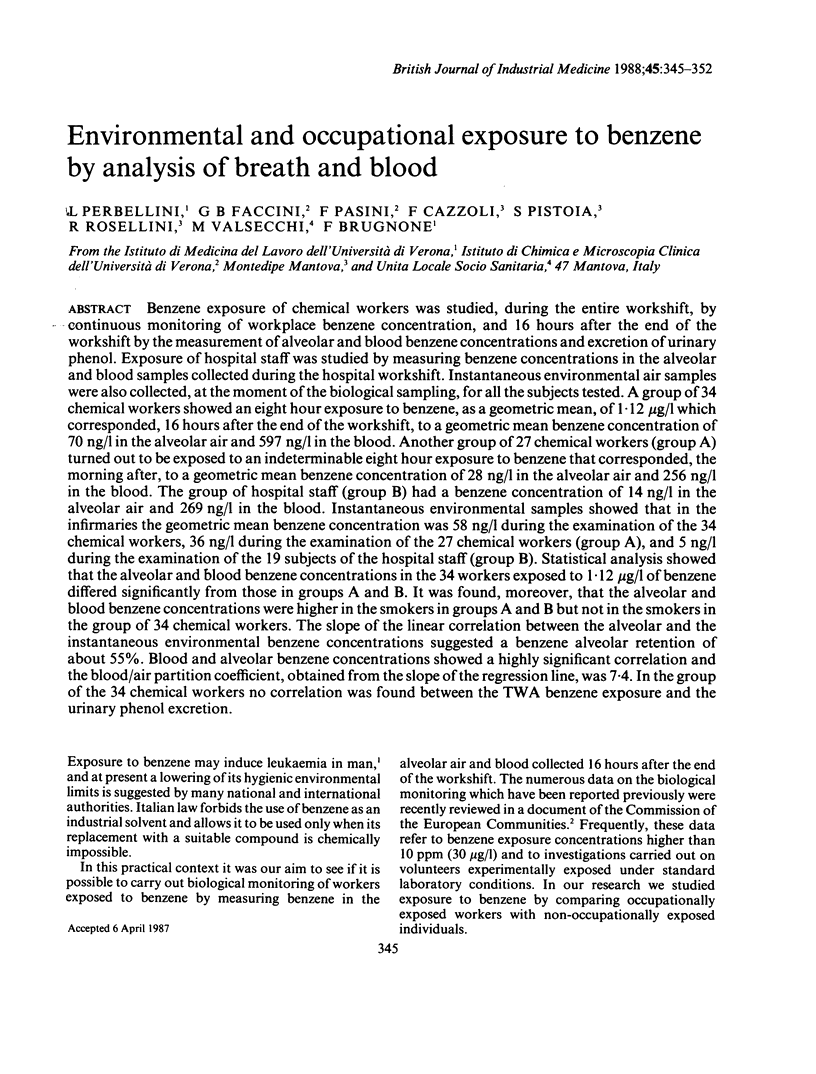
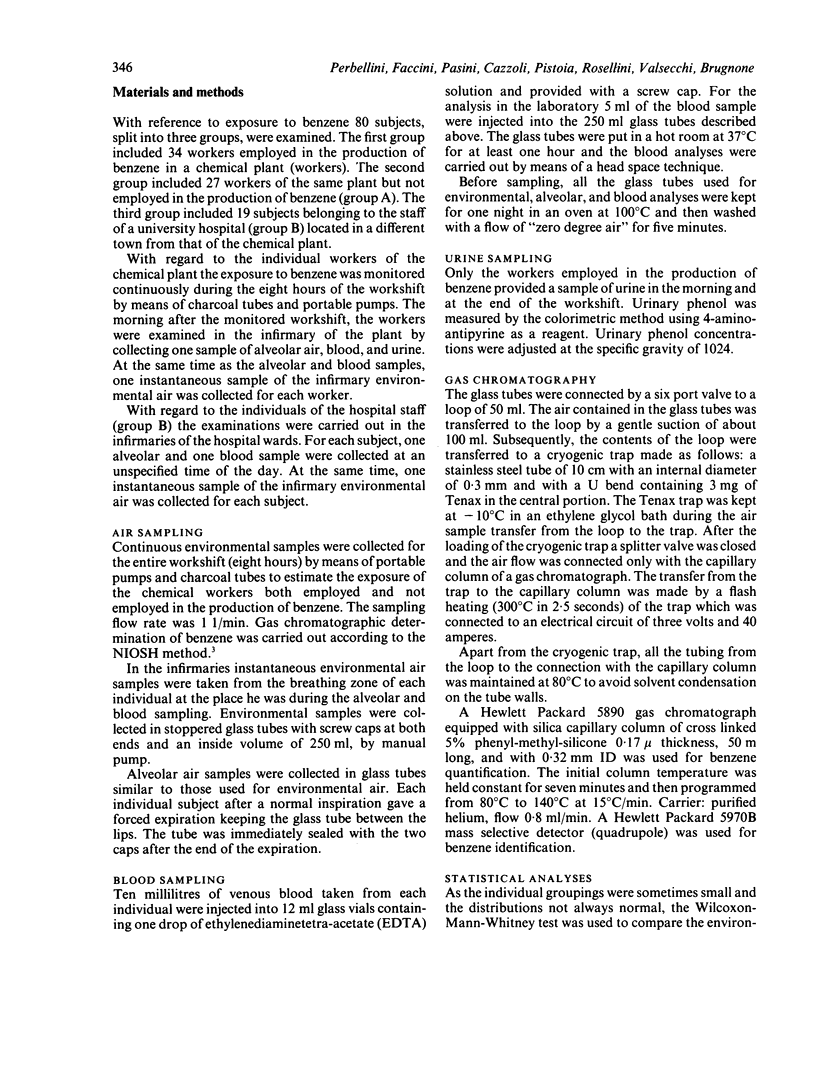
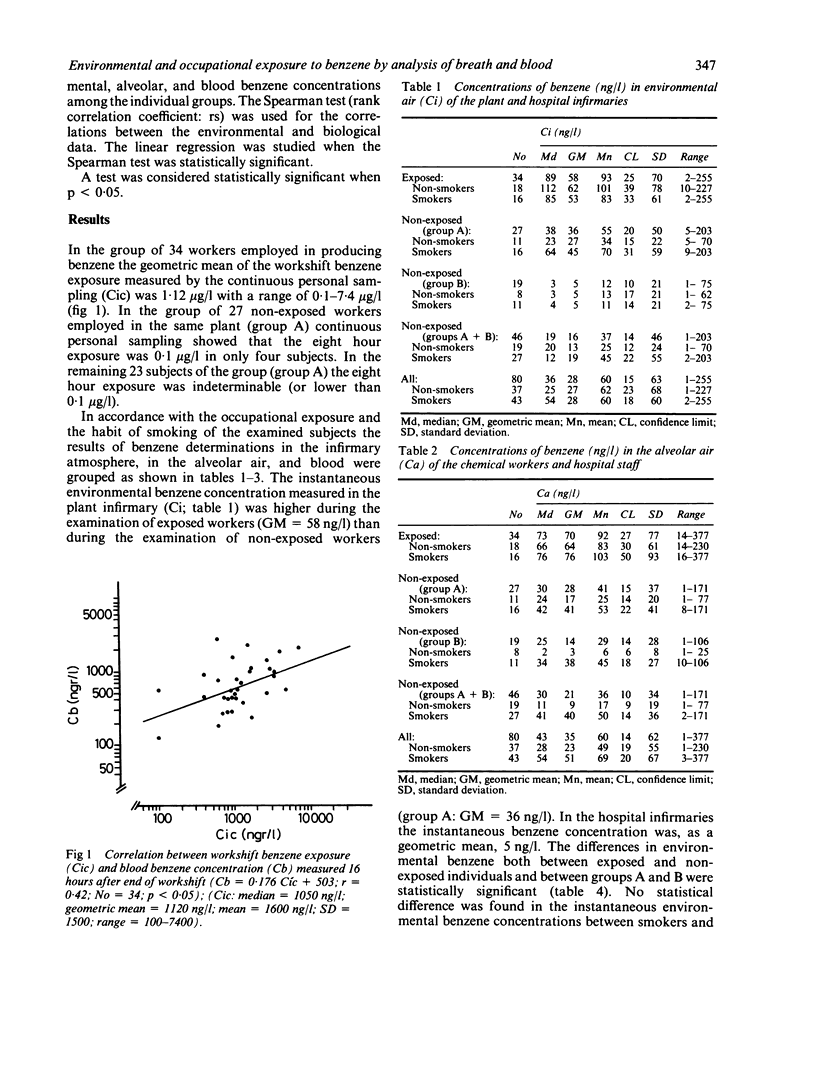
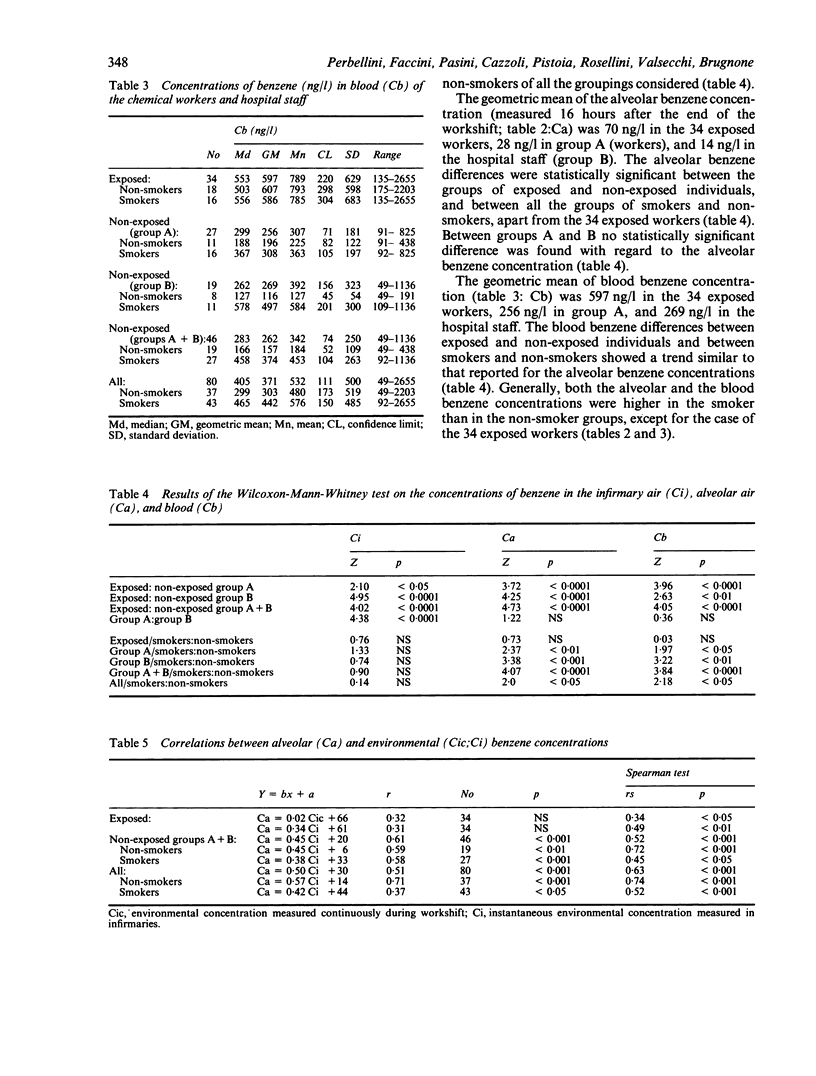

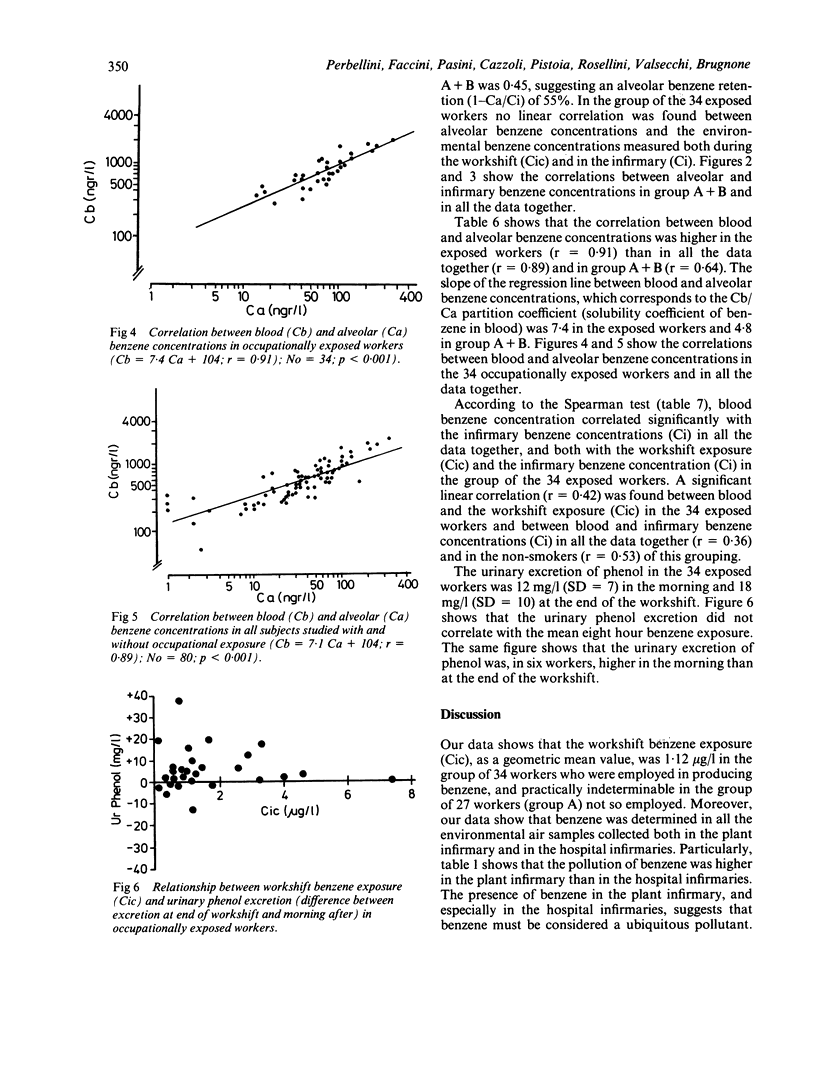
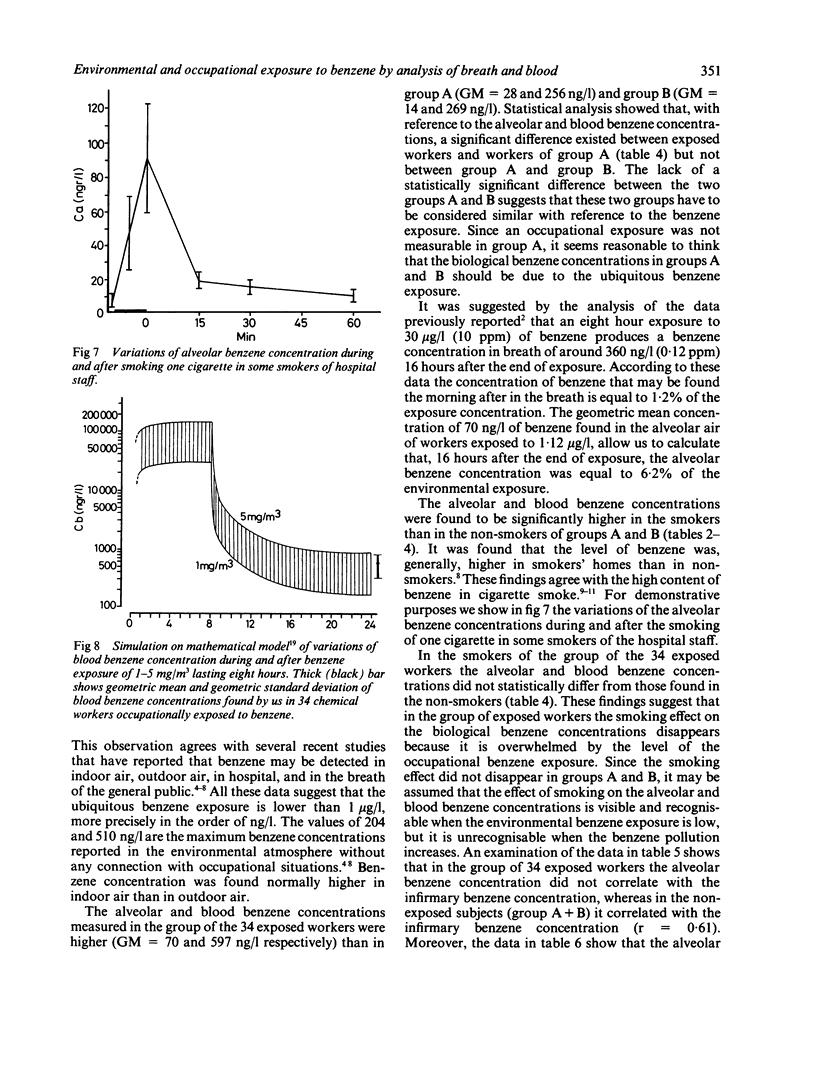
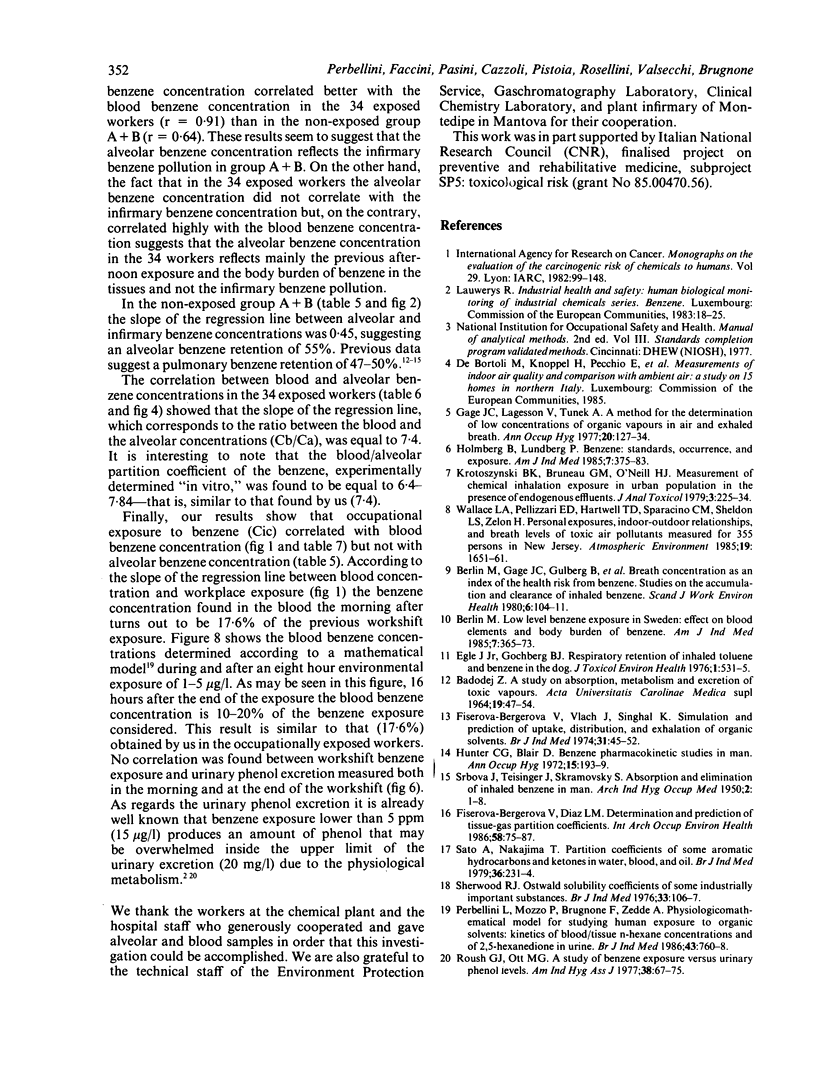
Selected References
These references are in PubMed. This may not be the complete list of references from this article.
- Becklake M. R., Liddell F. D., Manfreda J., McDonald J. C. Radiological changes after withdrawal from asbestos exposure. Br J Ind Med. 1979 Feb;36(1):23–28. doi: 10.1136/oem.36.1.23. [DOI] [PMC free article] [PubMed] [Google Scholar]
- Berlin M., Gage J. C., Gullberg B., Holm S., Knutsson P., Eng C., Tunek A. Breath concentration as an index of the health risk from benzene. Studies on the accumulation and clearance of inhaled benzene. Scand J Work Environ Health. 1980 Jun;6(2):104–111. doi: 10.5271/sjweh.2625. [DOI] [PubMed] [Google Scholar]
- Berlin M. Low level benzene exposure in Sweden: effect on blood elements and body burden of benzene. Am J Ind Med. 1985;7(5-6):365–373. doi: 10.1002/ajim.4700070503. [DOI] [PubMed] [Google Scholar]
- Egle J. L., Jr, Gochberg B. J. Respiratory retention of inhaled toluene and benzene in the dog. J Toxicol Environ Health. 1976 Jan;1(3):531–538. doi: 10.1080/15287397609529352. [DOI] [PubMed] [Google Scholar]
- Fiserova-Bergerova V., Diaz M. L. Determination and prediction of tissue-gas partition coefficients. Int Arch Occup Environ Health. 1986;58(1):75–87. doi: 10.1007/BF00378543. [DOI] [PubMed] [Google Scholar]
- Fiserova-Bergerova V., Vlach J., Singhal K. Simulation and prediciton of uptake, distribution, and exhalation of organic solvents. Br J Ind Med. 1974 Jan;31(1):45–52. doi: 10.1136/oem.31.1.45. [DOI] [PMC free article] [PubMed] [Google Scholar]
- Gage J. C., Lagesson V., Tunek A. A method for the determination of low concentrations of organic vapours in air and exhaled breath. Ann Occup Hyg. 1977 Oct;20(2):127–134. doi: 10.1093/annhyg/20.2.127. [DOI] [PubMed] [Google Scholar]
- Holmberg B., Lundberg P. Benzene: standards, occurrence, and exposure. Am J Ind Med. 1985;7(5-6):375–383. doi: 10.1002/ajim.4700070504. [DOI] [PubMed] [Google Scholar]
- Hunter C. G., Blair D. Benzene: pharmacokinetic studies in man. Ann Occup Hyg. 1972 Nov;15(2):193–201. doi: 10.1093/annhyg/15.2-4.193. [DOI] [PubMed] [Google Scholar]
- Perbellini L., Mozzo P., Brugnone F., Zedde A. Physiologicomathematical model for studying human exposure to organic solvents: kinetics of blood/tissue n-hexane concentrations and of 2,5-hexanedione in urine. Br J Ind Med. 1986 Nov;43(11):760–768. doi: 10.1136/oem.43.11.760. [DOI] [PMC free article] [PubMed] [Google Scholar]
- Roush G. J., Ott M. G. A study of benzene exposure versus urinary phenol levels. Am Ind Hyg Assoc J. 1977 Feb;38(2):67–75. doi: 10.1080/0002889778507916. [DOI] [PubMed] [Google Scholar]
- SRBOVA J., TEISINGER J., SKRAMOVSKY S. Absorption and elimination of inhaled benzene in man. Arch Ind Hyg Occup Med. 1950 Jul;2(1):1–8. [PubMed] [Google Scholar]
- Sherwood R. J. Ostwald solubility coefficients of some industrially important substances. Br J Ind Med. 1976 May;33(2):106–107. doi: 10.1136/oem.33.2.106. [DOI] [PMC free article] [PubMed] [Google Scholar]


